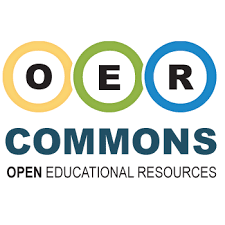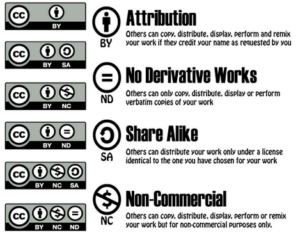Exploring Open Pedagogy and Open Educational Resources: A Paradigm Shift in Education
Photo provided by Online Learning Consortium https://onlinelearningconsortium.org/leading-the-change-towards-oer/
Hello everyone! As we navigate through the evolving educational landscape, the concepts of Open Pedagogy and Open Educational Resources (OER) offer a fresh and inclusive approach to teaching and learning. This module has really opened my eyes to the incredible potential of these concepts and their impact on global education. Here, I’ll explore Open Pedagogy, the role of OER, global trends, Creative Commons Licensing, and how these elements come together to contribute to an inclusive learning environment.
Understanding Open Pedagogy
Open Pedagogy is a student-centered approach to education characterized by collaboration, transparency, and the co-creation of knowledge. Unlike traditional teaching methods where the instructor is the central knowledge authority, Open Pedagogy encourages students and educators to collaboratively build and share knowledge. By involving students as active participants rather than just passive consumers of information, we foster a deeper engagement with the learning material.
An example of Open Pedagogy is an open course where students contribute to developing the course materials or engage in projects with real-world applications. This not only adds to students’ learning experience but also presents educators with different perspectives, leading to higher quality teaching strategies.
The Role and Impact of Open Educational Resources (OER)
Open Educational Resources (OER) are teaching and learning materials freely available for everyone to use, distribute, and modify. The transformative power of OER lies in their capacity to enhance education’s accessibility and equity. OER eliminates the cost barriers associated with textbooks and course materials, allowing learners everywhere to access quality education.
Platforms like MERLOT (Multimedia Educational Resource for Learning and Online Teaching, a repository for online learning materials) and OER Commons (a digital public library offering open educational resources from universities worldwide), educators can access a plethora of resources and contribute to the global educational repository, promoting a culture of sharing and inclusivity.

MERLOT logo https://oep.merlot.org/about.html
OER commons logo https://oercommons.org/about
A study titled “The Impact of Open Educational Resources on Various Student Success Metrics” by Colvard (2018) supports the positive effects of OER, showing improved student performance and satisfaction rates when OER are integrated into curricula. I recommend reading it over if you want to dive deeper into the topic, link to study: https://www.researchgate.net/publication/369752074_The_Impact_of_Open_Educational_Resources_on_Various_Student_Success_Metrics
Global Trends in OER
The worldwide buzz around Open Educational Resources (OER) is really taking off, and it’s all about making education more accessible and inclusive. Across the globe, schools and universities are jumping on the OER train, recognizing it as a game-changer for teaching and learning. A standout effort in this space is UNESCO’s OER Recommendation, which guides countries in adopting and advancing open resources for education.
Countries like Canada and New Zealand are leading the charge, pushing forward with policies that promote OER to boost educational accessibility and equity. These nations understand that OER can cut down on costs and provide teachers with the flexibility to tailor resources to suit diverse student needs, making education more personalized and effective.
Of course, there are a few bumps in the road. Not everyone has equal access to the necessary tech to make full use of OER, thanks to the digital divide that still exists. Plus, some educators might need a bit more training and encouragement to dive into creating and using open resources. But here’s the silver lining—OER offers tons of opportunities. Schools can rethink their curriculums to better fit the digital age, and educators can tap into a massive pool of shared resources and global collaborations. As more and more people join the OER movement, the dream of making learning truly accessible and adaptive for everyone is getting closer every day.
Understanding Creative Commons Licensing
Creative Commons Licensing can really change the game for sharing educational materials. These licenses are crucial for Open Educational Resources (OER) because they let us use, adapt, and share educational goodies in a way that respects the original creators.
I found this chart very helpful in describing the different types of licenses:

by Terezinha Marcondes Diniz Biazi
https://www.researchgate.net/figure/The-six-Creative-Commons-licenses-Source_fig1_354453019
Understanding how these licenses work is super important, especially if, like me, you’re into combining fields like engineering and linguistics. For example, the Creative Commons Attribution license (CC BY) is fantastic—it lets others modify and use your work, even for commercial purposes, as long as they give you credit.
In a future where I might be teaching either engineering or linguistics, I’d love to use the CC BY license for my course resources. This means my students could tweak and share what I’ve created to fit their learning needs, and other educators could enhance it further. This approach not only expands access to learning but also fuels collaboration and innovation.
In a nutshell, Creative Commons Licensing opens up a world of possibilities for creating and sharing knowledge. It’s all about building a community where learning resources are flexible and freely available, which is something I’m really passionate about pursuing in the realms of engineering and linguistics!
Attributes of Open Pedagogy
Key attributes of Open Pedagogy, such as collaboration, transparency, and student-centered learning, reshape the educational experience. Collaboration is realized through projects on platforms like Slack (an online collaboration hub for better work coordination) and Padlet (a virtual whiteboard for collaborative activities), ensuring that learning is not isolated to individual efforts but a communal pursuit. Transparency in open pedagogy encourages clear expectations and open access to course materials, fostering trust and inclusivity within the class environment.
Implementing these attributes could involve students actively participating in course design, using Wikis for collaborative projects, or engaging in open discussions on these platforms. This approach not only enhances learning but also prepares students to thrive in a collaborative and open world.
Open Pedagogy and OER paves the way for a more inclusive, equitable, and collaborative educational landscape. As educators and learners, this approach allows us to reshape education into a truly participatory process enriching the experience for everyone involved.
For those interested in further exploring Open Educational Resources, the video below by David Wiley offers in-depth insights into OER practices and global impact:
Thank you for joining me on this journey into the world of Open Pedagogy and OER. I’m excited to continue exploring these innovative educational practices!
References:
Colvard, Nicholas & Watson, C & Park, Hyojin. (2018). The Impact of Open Educational Resources on Various Student Success Metrics. 262-276.
David Wiley. “Understanding OER: Practices and Initiatives.” YouTube Video, https://www.youtube.com/watch?v=x3CY6RR4uns
